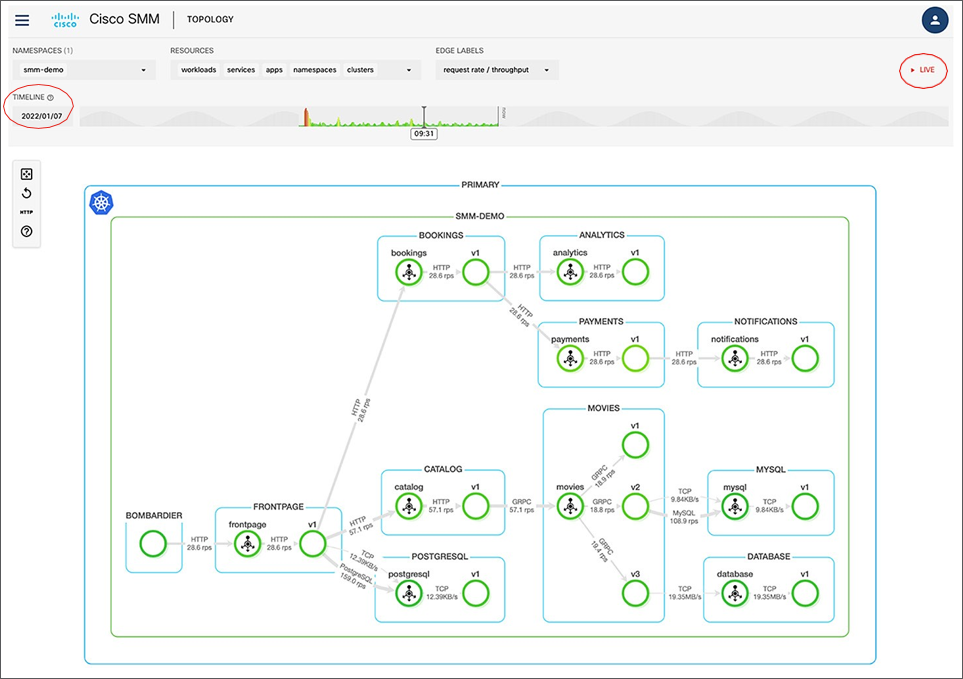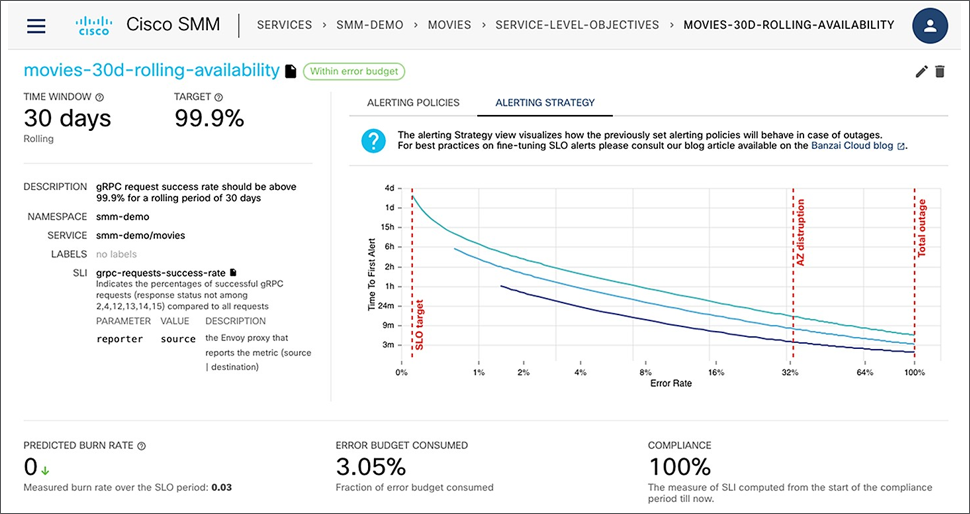Cisco Service Mesh Manager At-a-Glance
Available Languages
Bias-Free Language
The documentation set for this product strives to use bias-free language. For the purposes of this documentation set, bias-free is defined as language that does not imply discrimination based on age, disability, gender, racial identity, ethnic identity, sexual orientation, socioeconomic status, and intersectionality. Exceptions may be present in the documentation due to language that is hardcoded in the user interfaces of the product software, language used based on RFP documentation, or language that is used by a referenced third-party product. Learn more about how Cisco is using Inclusive Language.
Easily scale, manage, and observe microservices across on-premises data center and cloud
With the accelerating demand for digital transformation, businesses are increasingly adopting cloud-native architectures. Microservice-based applications are created with software functionality spread across multiple services that are independently deployable, easier to maintain and test, and can be more rapidly updated. As these services scale, however, microservices application architectures can get really complex, really quickly, often running across multiple clusters both on premises and in the cloud.
To manage this complexity customers rely on a service mesh such as Istio. A service mesh enables you to connect, control, and observe microservices, thereby providing you with consistent development, deployment, security, and scalability with little or no changes to the application code. Cisco® Service Mesh Manager (SMM) builds upon the advantages of 100-percent upstream Istio by adding a powerful UI/API/CLI and tooling to manage complex multicluster applications and services across any cloud, any time, from anywhere.
Single management plane for your microservices
Unlike Istio, which requires separate installation of one tool for metrics, another for topology, and yet another for tracing, Cisco Service Mesh Manager integrates visibility into a single pane of glass. Here administrators can easily understand the traffic flow across services and switch between live and historical views.
This comprehensive view of actionable insights off-loads cluster and mesh administration from developers and provides application security, visibility, and traffic management to DevOps and SRE teams. Developers, then, are free to focus on their code with a consistent framework in place.
This central view of the application also simplifies upgrades and day-2 operations including industry- standard canary upgrades, where traffic is gradually migrated to the new service based on traffic success metrics. This accelerates time to market for new features and capabilities and improves software quality and user experience for business-critical applications.

Automatically generated topology view allows switching between live and historical views
Track service-level objectives
Cisco Service Mesh Manager provides deep visibility of Service-Level Objectives (SLOs) at a per-service level and allows administrators to set targets for latency and availability. Graphs are automatically generated to track your compliance to an “error budget” over time and trigger alerts when projections exceed thresholds.

Proactive service-level objective monitoring
Apply consistent security policies across multicluster and multicloud
Mutual Transport Layer Security (mTLS) has never been easier. The Cisco Service Mesh Manager user interface includes a simple button to enable mTLS and provides quick visibility of the security posture within the topology view.
mTLS secures communication between microservices in a service mesh by using cryptographically secure technology to mutually authenticate individual microservice workloads and encrypt the traffic between them. SMM also includes a UI to create/manage certificates and terminate TLS connections at ingress gateways for securing microservices that do not natively support TLS capabilities.
Cisco Service Mesh Manager provides the following features to observe and manage the microservices running in your service mesh, as well as to implement advanced use-cases:
Mesh management features:
● Istio management (installation and updates)
● Architecture patterns (multi-mesh)
● Easy configuration of multiple gateways per mesh
● Interconnecting external services
● Reliability testing and fault Injection
● Configuration validations
Integrated service observability features:
● Service Level Outlier (SLO)–based alerting
● Outlier detection for health metrics
● Integrated metrics and topology views
● Timeline views
● Traffic taps
● Distributed tracing
● Metrics collection
Advanced use-cases supported:
● Blue/green deployments
● Canary deployments with traffic management
● Circuit breakers
● Mutual Transport Layer Security (mTLS) policy management
With these powerful features, Cisco Service Mesh Manager enables you to standardize microservice security, observability, and traffic management, freeing your developers to focus on rapid application development to drive business transformation and growth.
Cisco Service Mesh Manager is available as an add-on to Cisco Intersight™ Kubernetes Service Advantage tier. Contact your Cisco sales team for more details.